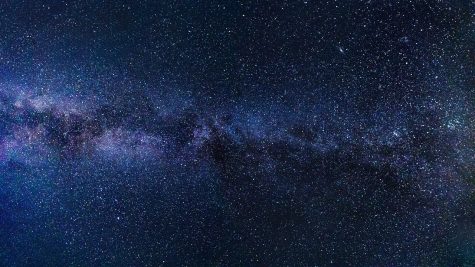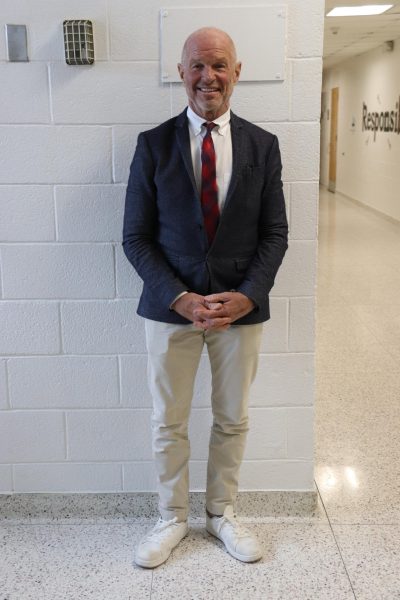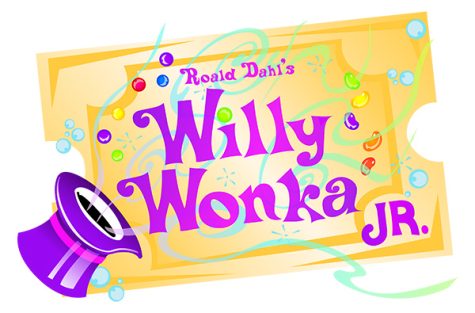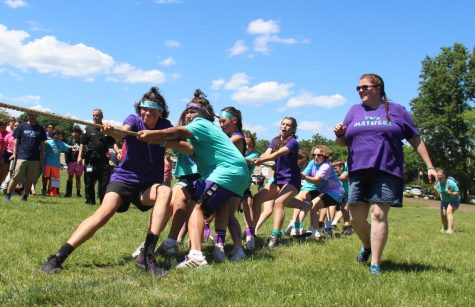Rare Occurrence of “Christmas Star” will bring 2020 to a Beautiful Close
December 18, 2020
 It’s safe to say that 2020 hasn’t been the best. With the number of COVID-19 cases rising rapidly, it can be hard to enjoy the holidays with friends and family as usual. Fortunately, there is something for everyone to look forward to in December. For the first time in almost 400 years, a rare celestial phenomenon called the “Christmas Star” will be visible in the night sky on the winter solstice. This rare event occurs when Saturn and Jupiter appear very close together in the night sky and is only visible for a short time: about a night or two.
It’s safe to say that 2020 hasn’t been the best. With the number of COVID-19 cases rising rapidly, it can be hard to enjoy the holidays with friends and family as usual. Fortunately, there is something for everyone to look forward to in December. For the first time in almost 400 years, a rare celestial phenomenon called the “Christmas Star” will be visible in the night sky on the winter solstice. This rare event occurs when Saturn and Jupiter appear very close together in the night sky and is only visible for a short time: about a night or two.
Even though this occurred in 1623, it wasn’t visible from earth. This was due to the fact that the planets were only 4 degrees away from the sun in the daytime, causing the rare event to slip away from us and many onlookers to go blind from the sun’s rays. But, because this time Saturn and Jupiter will be aligning to the southwest (from our view here on Earth), the phenomenon will likely be easily visible with the naked eye. What is special about planetary conjunctions is that even though they occur every 20 years or so, most of them happen during the daytime and they are impossible to see from Earth. The alignment happening on the solstice will be one of a kind since the last time that Saturn and Jupiter got this close was 800 years ago, in 1226.
So why is this extremely rare event nicknamed the “Christmas Star”? The main reason why it is called this is because when the two planets (and their moons) appear together in the night sky, a shape that resembles the Star of Bethlehem is formed. In Christian ideology, this star leads to the location where Jesus Christ was born. Since he was born on Christmas day, the star has earned the moniker “the Christmas Star.”
Mrs. Pagano, a science teacher at GW, said, “I think that getting the opportunity to watch a rare astronomical event is incredible! The last time that this same thing happened was back during the Middle Ages…isn’t that crazy to think about? The last time Jupiter and Saturn lined up like this in our sky, there were knights riding around on horseback protecting their kingdoms! It is also a cool coincidence that we are going to be able to view this on December 21st; this is the winter solstice, which is when we have the shortest amount of daylight all year. The sun should be setting close to 4:30 in the afternoon, so it is the perfect opportunity to get outside and watch for this bright light in the night sky, even before dinnertime. This sort of thing is so rare, the next time you’ll be able to see it is in 2080.”
According to NASA officials, on the night of the winter solstice, Jupiter and Saturn will be as close as the thickness of a dime from our vantage point here on Earth. This event is so rare because unlike Earth, which only takes 1 year to orbit the sun, Saturn takes about 29 years and Jupiter takes 12. There will only be a few points in history where an alignment like this is possible. Though it seems like there is scientific evidence behind the fact that this conjunction will reach its peak on the night of the winter solstice, it is actually just a huge coincidence! The last time the conjunction was observable from Earth, it was March, not December. There is no date that is set-in-stone for this celestial phenomenon.
So, how can you watch this incredible event? About an hour or so after sunset on December 21, look to the southwest. There, you will be able to view the conjunction. It will reach its apex around 7:00 PM EST. You will easily be able to see it, but if you want a closer look at Saturn’s rings and Jupiter’s moons, using binoculars or a small telescope is highly recommended. For optimal viewing, the weather conditions in your area should be clear with very few clouds in the sky. Otherwise, there will be many things that might obstruct your view.
Amazing occurrences like this don’t happen every day, so make sure to go outside and observe this celestial phenomenon. Otherwise, you’ll have to wait another 60 years to see it in person again. If you aren’t able to view the conjunction, there are many planetariums that will be hosting a live event. The Lowell Observatory in Flagstaff, Arizona will be hosting a live stream on their youtube channel starting at 5:00 PM on the 21st. While watching this online may not compare to observing it in real life, it is still a good alternative if weather conditions aren’t in your favor.
This holiday season might not live up to the ones in the past. Due to the pandemic, many of us won’t be seeing friends and family in person. But, this rare celestial event is a perfect way to end this crazy year on a high note.







